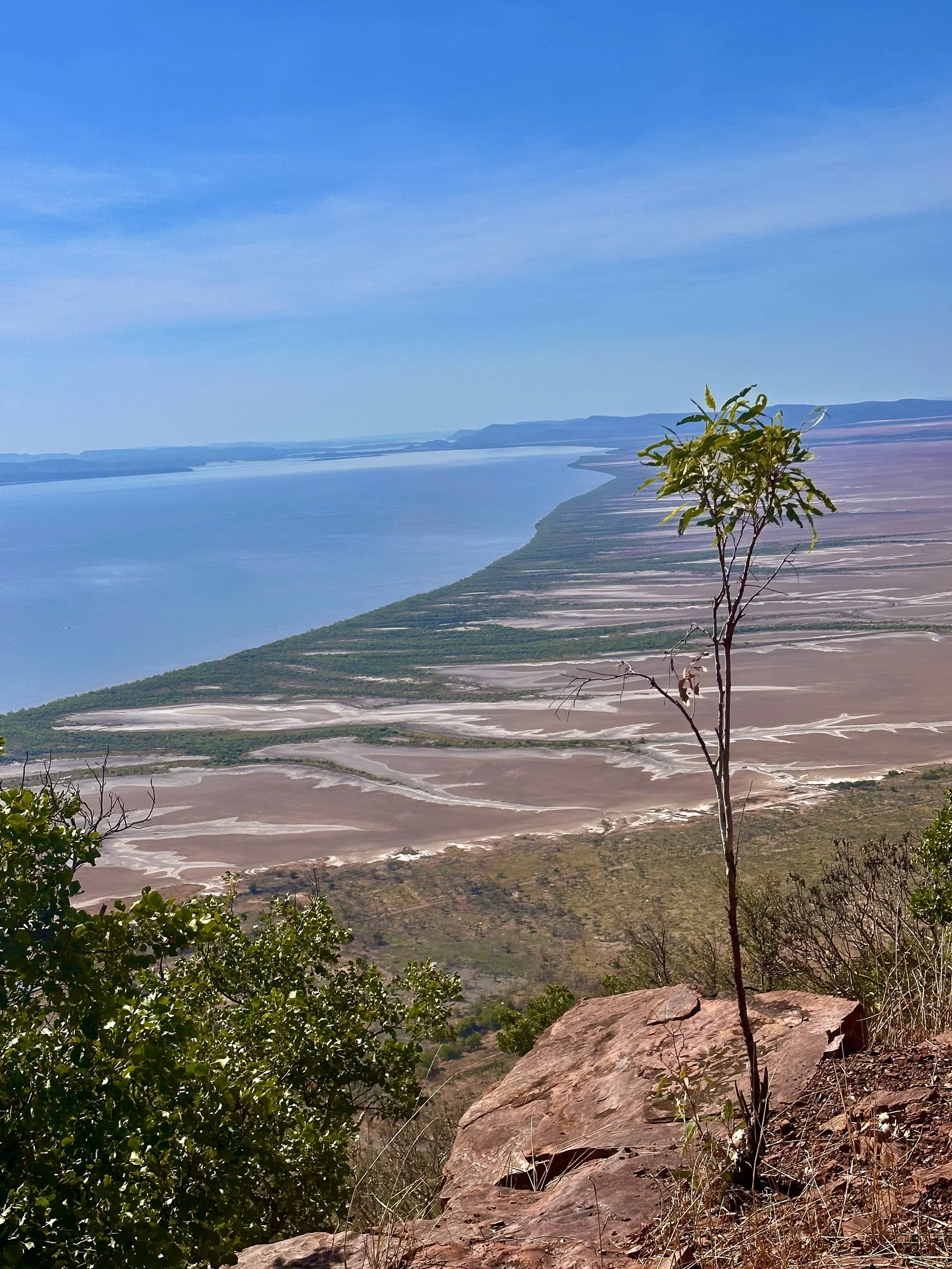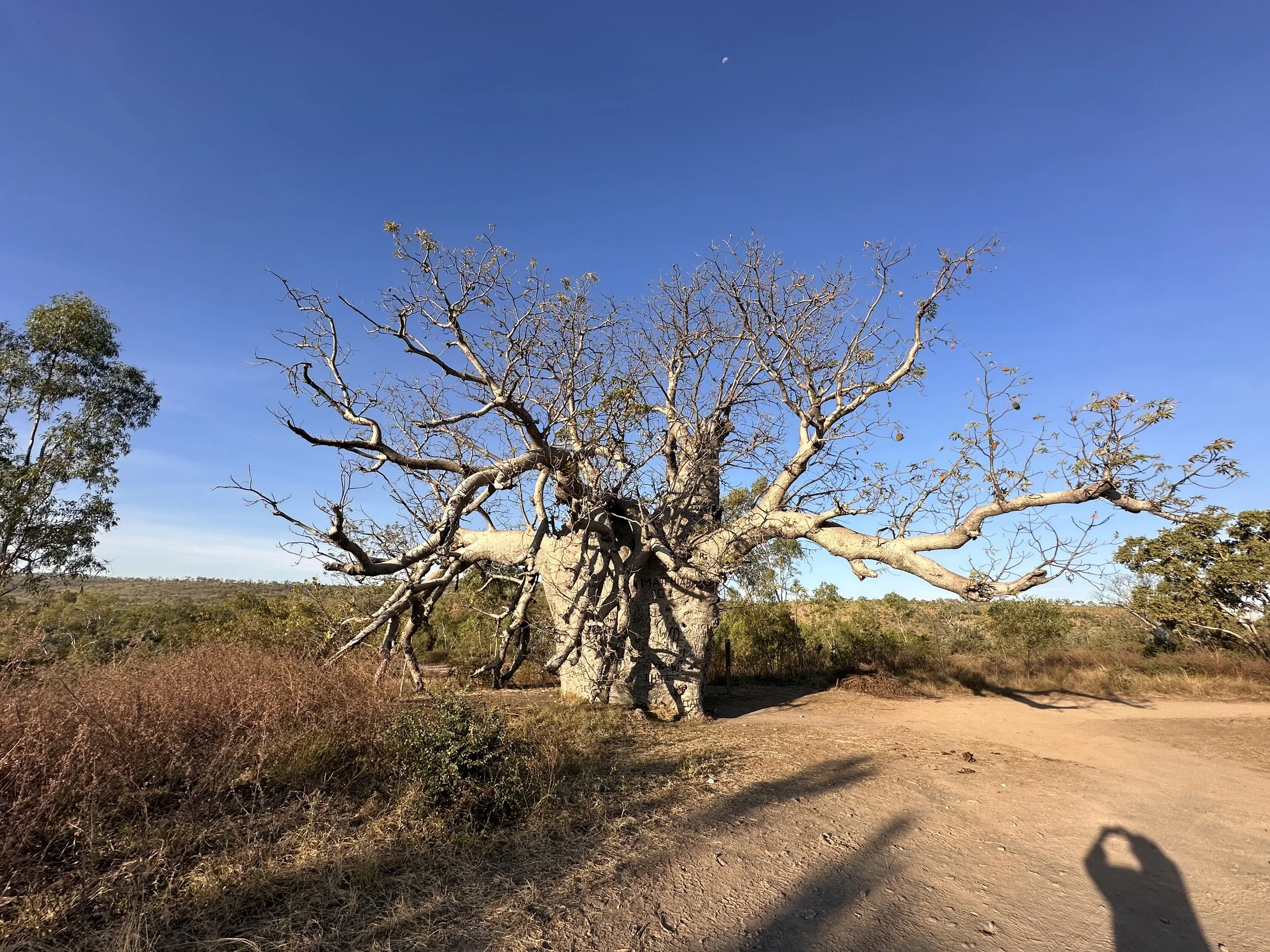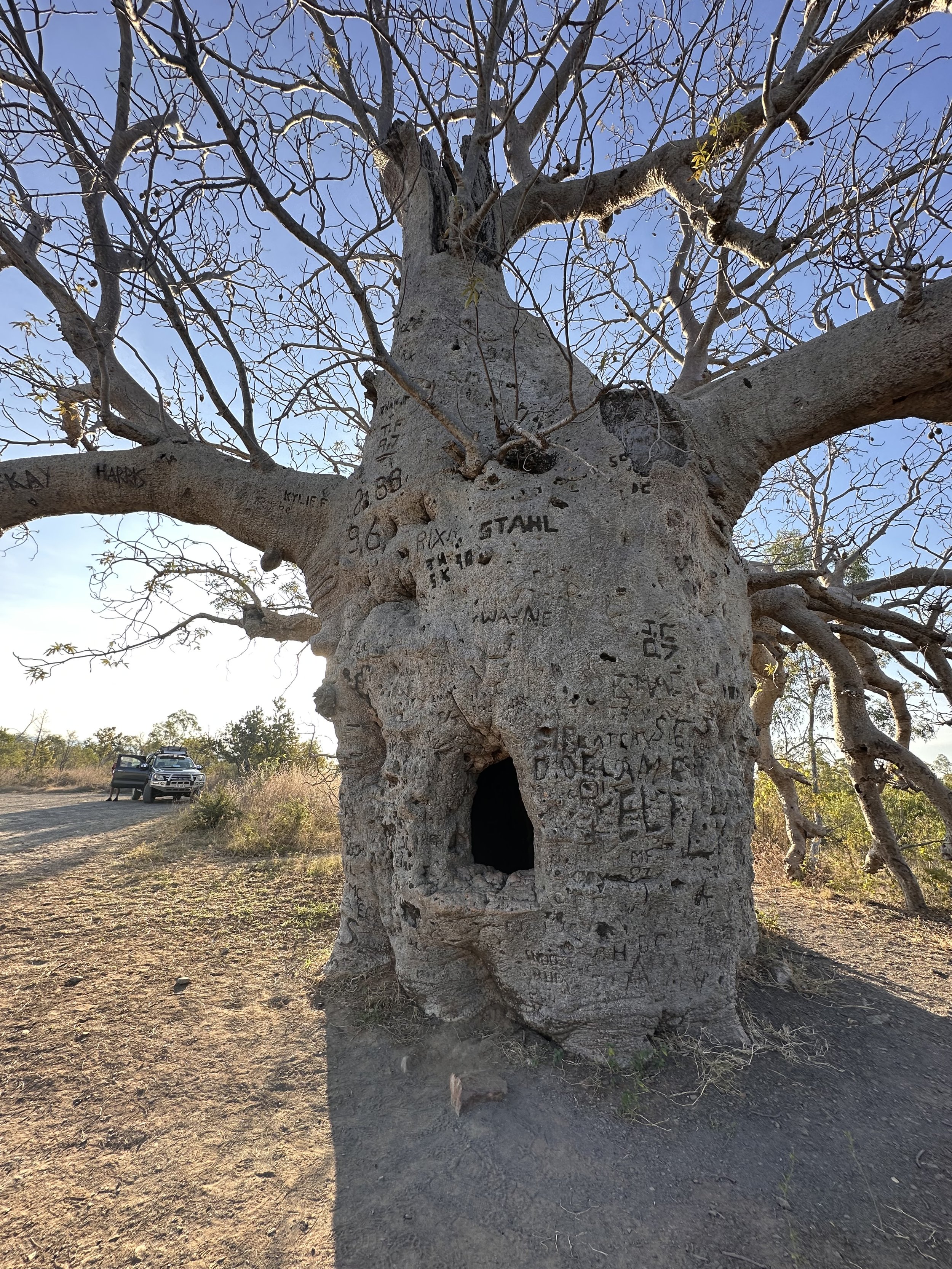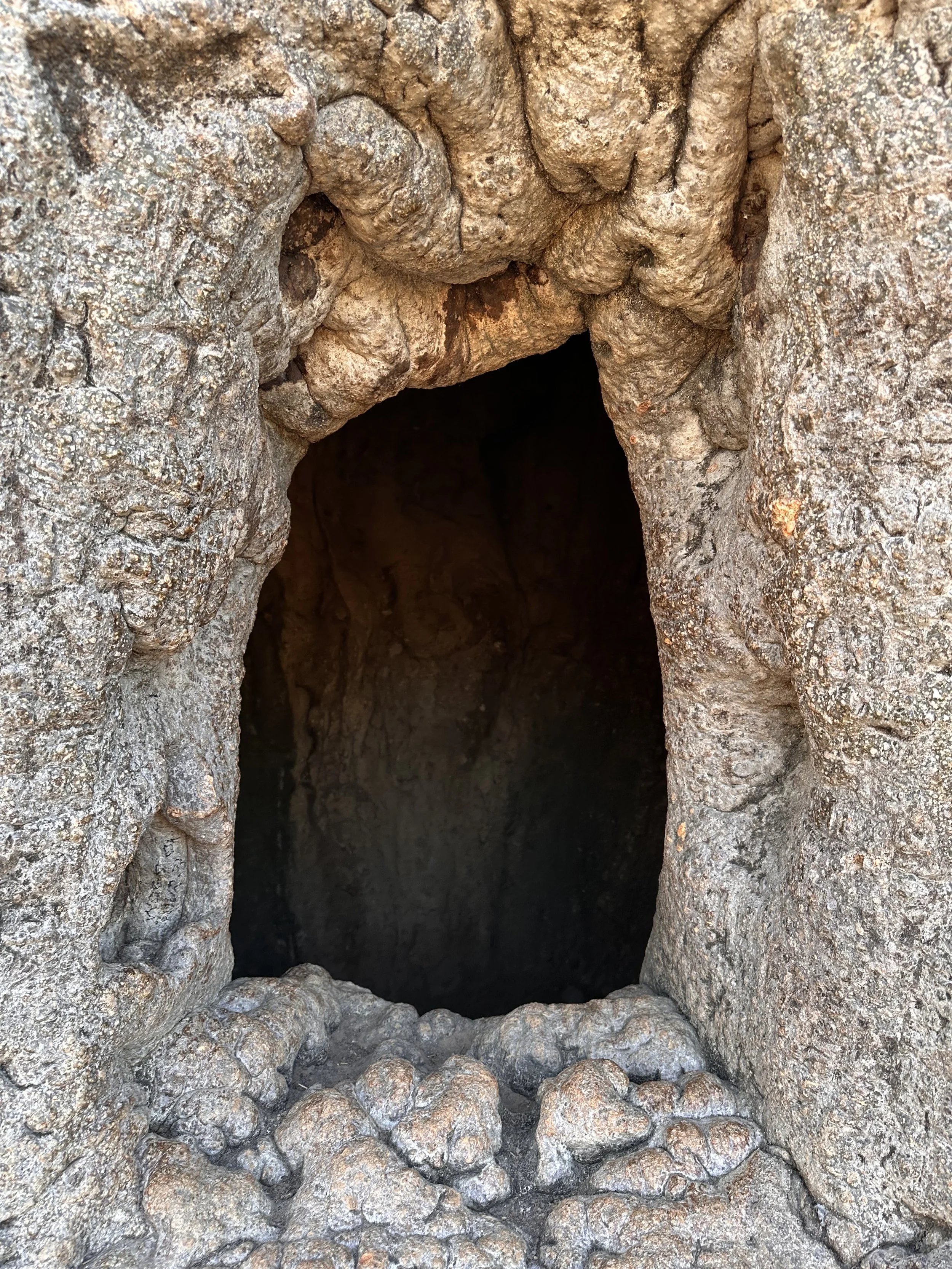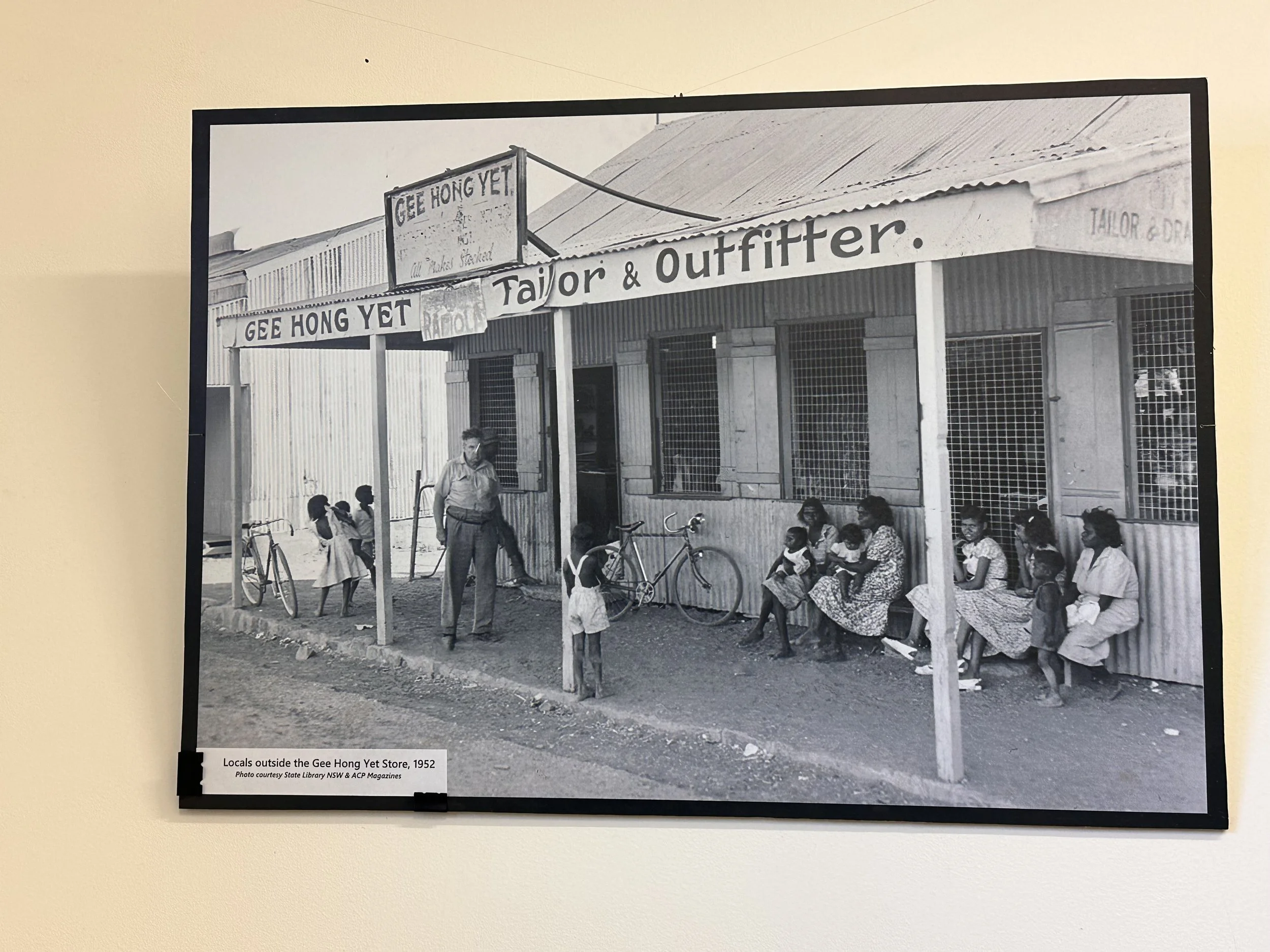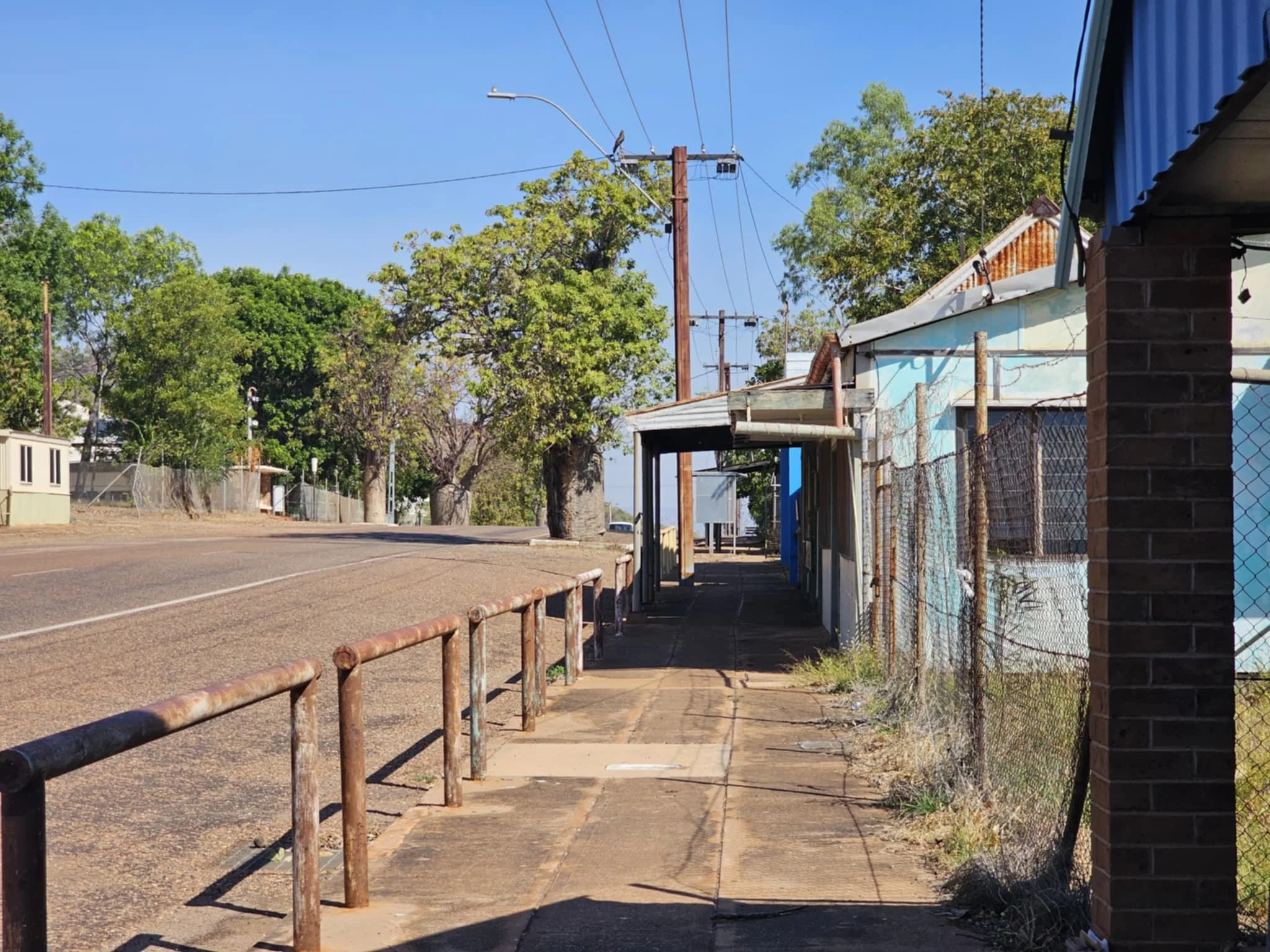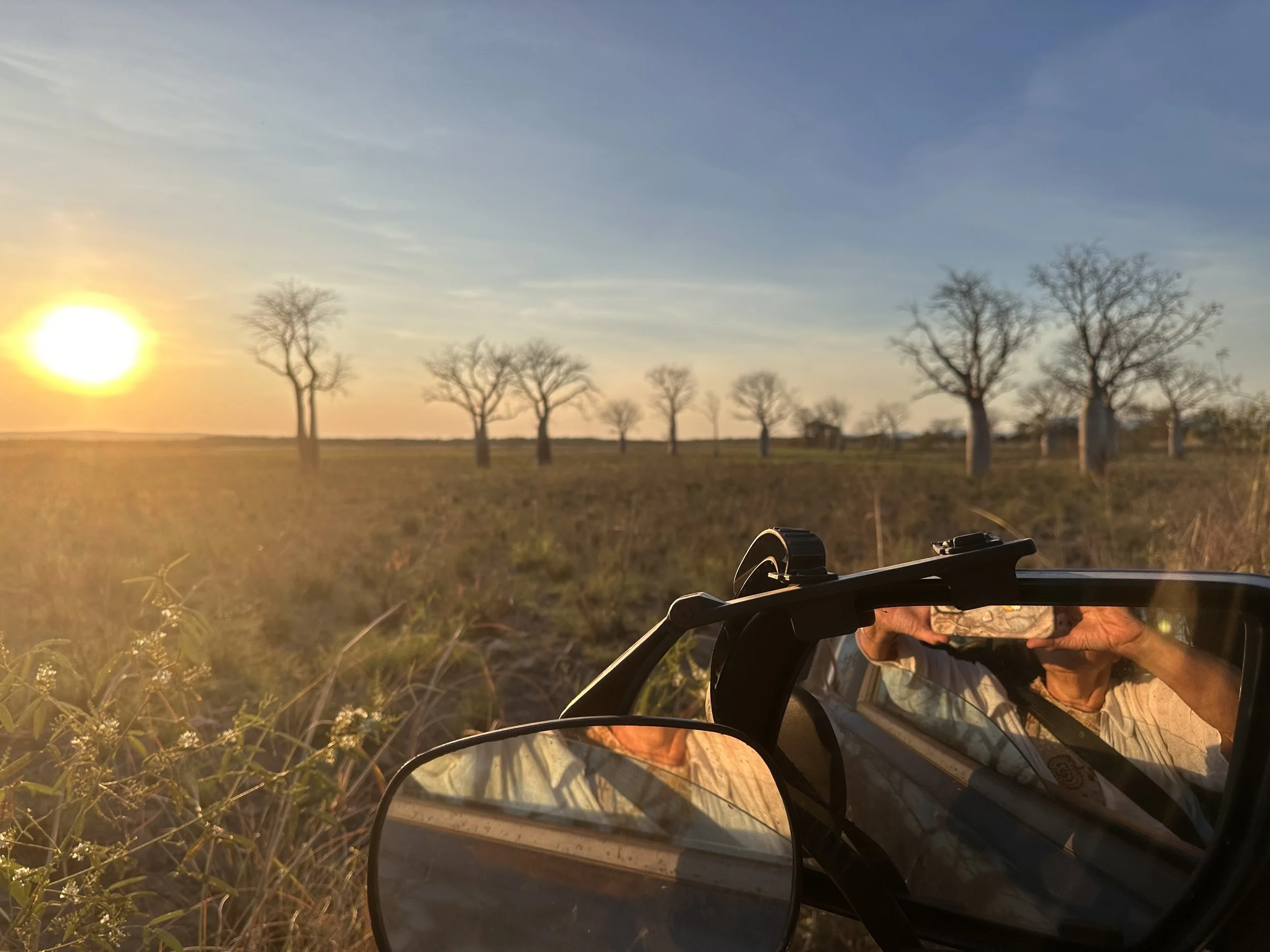So here we are…Kununurra, the Kimberley Western Australia. We are camped under the shadow of the Mirima National Park albeit in the regimented rows of the Hidden Valley Caravan Park. Still its an opportunity for hot showers and washing clothes not possible over the past weeks. From here its a good base to do some exploring and I have always wanted to go to Wyndham a frontier town on the Cambridge Gulf and the site of the Prison Tree.
This is Boab country. I first started to notice them as we travelled along the Victoria Highway towards Judbarra/Gregory National Park NT. We would excitedly stop the car to take photos of these incredible giants, each seemingly with their own personality.
Just outside our campsite at Big Horse Creek, is the Gregory Tree by the Victoria River. Augustus Charles Gregory was the leader of the North Australia Expedition in 1855–1856 and it marks an area where he camped. The dates of these camps, 13 October 1855 and 2 July 1856, was gouged into the tree trunk by the expedition artist. The boab was formerly named (Adansonia gregorii) .by the expedition botanist Ferdinand von Mueller The tree already had sacred significance to the Ngarinman people; and is still valued as a sacred site.
Wyndham is a frontier town and began as a port for the gold rush at Halls Creek in 1886, After that it was a beef cattle export port and has largely been overshadowed now by Kununurra which was built in 1961 to support the development of the Ord River dam.
The Wyndham prison tree is a boab used as a lock up for Indigenous prisoners being gaoled for killing stock. The hollowed out section; inside the trunk, was used by police patrols to house prisoners overnight on route to Wyndham from late 1800s until the early 1900s.
‘Police Officers were paid to feed each prisoner they arrested and held in custody. In 1905 the rate was 1s. 6d. per head per day for Wyndham and 2s. 5d. for Halls Creek and Argyle (Wild Dog) Stations. These payments were a huge source of revenue to the police it was possible for some officers to double their yearly salary) and provided a strong incentive to arrest multiple suspects.’—Wyndham Museum.
Fortunes wax and wane. The way we see things change- slowly over time.
When I consider these magnificent trees I can appreciate why they would have been so important to first nations peoples. As medicine, as food, as spiritual and cultural markers. Both the Gregory Tree and the prison tree (Hiilgrove Lockup) would have seen so much. Though scarred by old and new graffiti like the first peoples, they are still standing, with many stories to tell if we have the will to listen.



